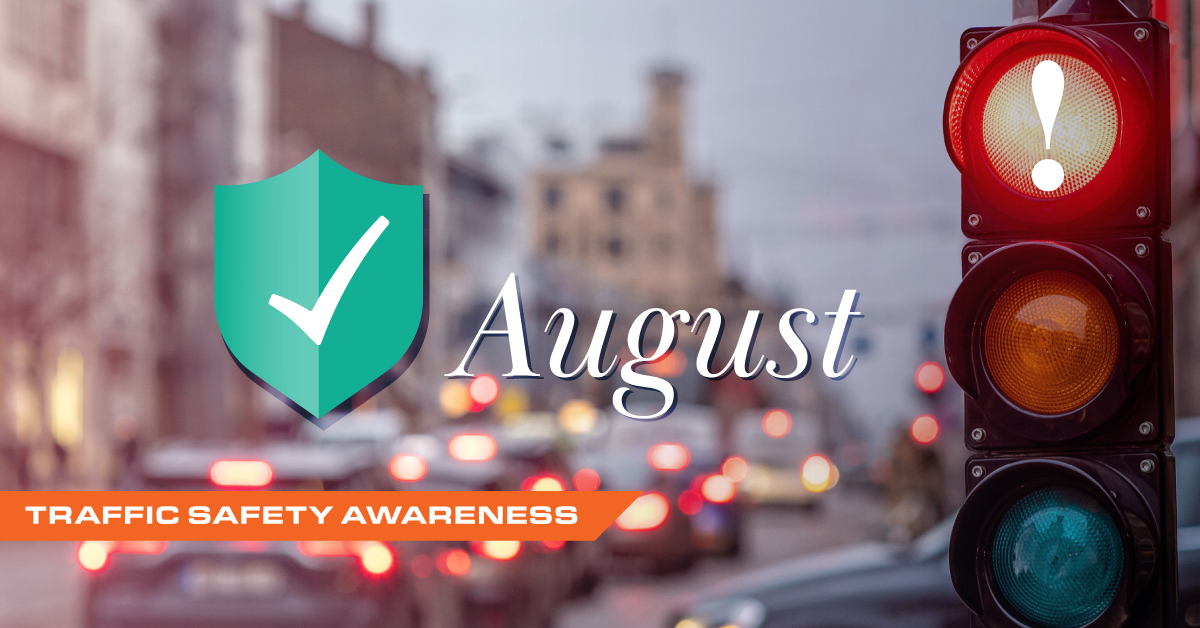Traffic Safety is Transportation Safety
August is National Traffic Safety Awareness Month, which reminds us to take safety seriously. The road can be a scary place; when you’re driving a car, you’re not only sharing the street with other automobiles – you’re also sharing it with pedestrians, cyclists, and sometimes, even trains. This month not only reminds us how to keep ourselves safe, but also serves as a motivator to develop innovative ways to improve our transportation and safety systems in the United States.
According to the World Health Organization, approximately 1.3 million people die each year as a result of road traffic crashes. Many of these crashes are preventable and are a result of not following safety protocols, but even if we personally are following the rules of the road, we can’t always account for others’ behavior. And for many, driving is unavoidable – whether it’s to work, home, or to the doctor. It is statistics like these that continue to motivate us at Northeast Maglev to improve transportation options in order to not only reduce traffic and thereby accidents, but more importantly, to spur a transportation mode shift to alternative modes of transit that are safer, more reliable, and faster than driving.
There are many factors that play into road traffic incidents. Some are more obvious than others; not adhering to the speed limit, for example, is directly related to the likelihood of a crash occurring. Distracted driving and driving under the influence are also directly correlated to crashes. It’s imperative that drivers adhere to the speed limit, remain sober while behind the wheel, and stay off mobile devices.
But there are other, often forgotten aspects that can lead to dangerous situations on the road. Unsafe road infrastructure, like streets without footpaths, cycling lanes, or safe crossing points, can lead to fatal scenarios among road users. The design of roads can have great impacts on the safety of drivers in relation to fellow road users, such as pedestrians, cyclists, and motorcyclists.
Moreover, unsafe crossing points are far too common. There are many roads that share street space with trolleys, trams, and railroad crossings. Not having these areas clearly marked, protected, or secured leads to countless preventable injuries and oftentimes, deaths. In fact, in 2021, there were approximately 2,148 grade crossing incidents, resulting in 236 deaths and 662 injuries. And while these issues can directly cause accidents (trains colliding with vehicles or pedestrians), they can also indirectly cause other issues, as U.S. Transportation Secretary Pete Buttigieg recently noted: “”In too many communities across America, outdated railroad crossings are unsafe, result in lengthy wait times, and can even create significant delays in our supply chains.”
In order to improve these conditions, in June 2022 the U.S. Department of Transportation announced “The Railroad Crossing Elimination Program” which offers more than $573 million in grant funding that will “make many grade crossings safer or eliminate them altogether in the coming years.” Projects will be awarded based on their potential to “improve safety by eliminating crossings or improving existing highway-rail grade crossings; increase access to emergency services; reduce emissions; provide economic benefit; and hire locally, among other possible community enhancements.”
As a company that prides itself on innovation and safety, Northeast Maglev is eager to see the innovative projects that can benefit from this grant, and ultimately improve the lives of millions across the United States. It is obvious that pedestrians, cyclists, and other vehicles share the road, even those that belong on tracks. The Superconducting Maglev (SCMAGLEV) that will connect cities along the Northeast Corridor operates within a dedicated guideway, meaning that it does not share tracks with any other trains or freight. Most importantly, the SCMAGLEV is designed on the principles of accident avoidance and will not have any grade-level crossings. The system operates either above or underground, never requiring pedestrians or cars to cross the tracks. We are hopeful that The Railroad Crossing Elimination Program will inspire similarly safe projects and efforts to eliminate and reduce railroad crossings, in turn creating a safer environment for all.
It is also an important matter to increase redundancy in transportation options in the United States. If people would like to choose a safer alternative to driving or even biking, there should be more realistic options to cater to these needs, and the SCMAGLEV is just the start. We hope that by bringing awareness to traffic safety, we can remind everyone to not only abide by the traffic safety rules, but to consider the collective – there are ways to not only improve safety as we see it now, but also ways to improve safety for the future.
